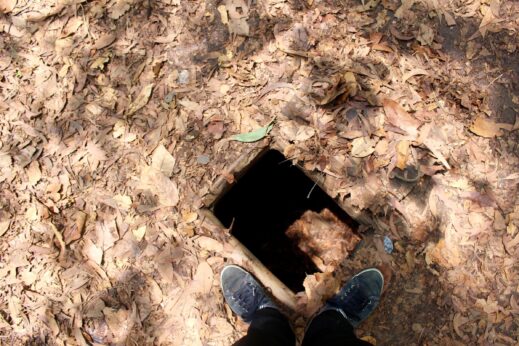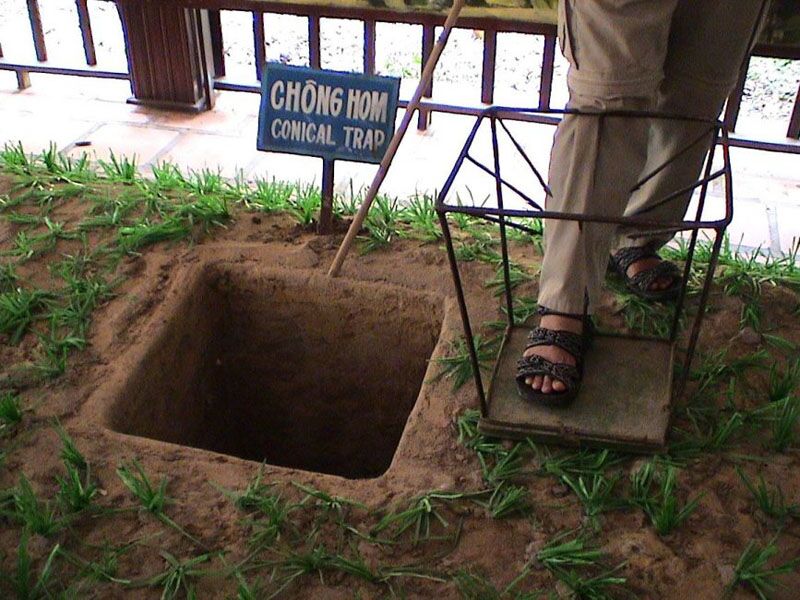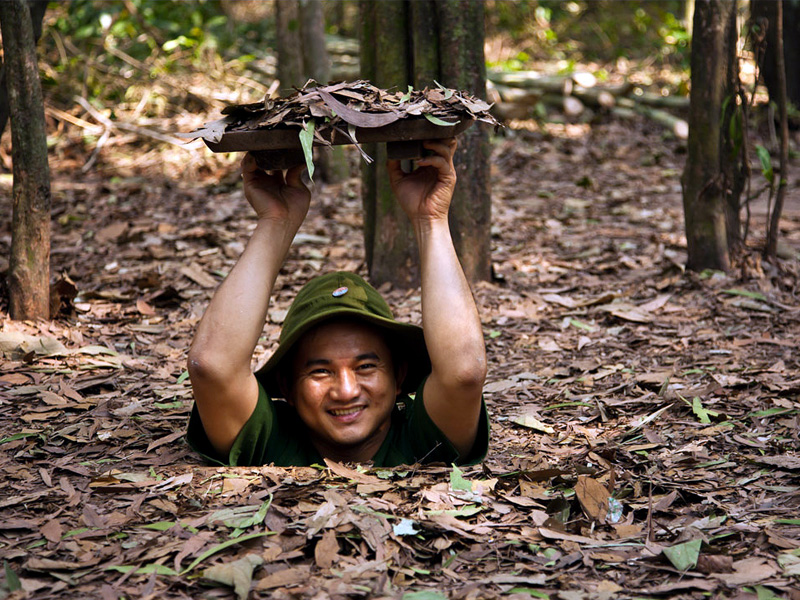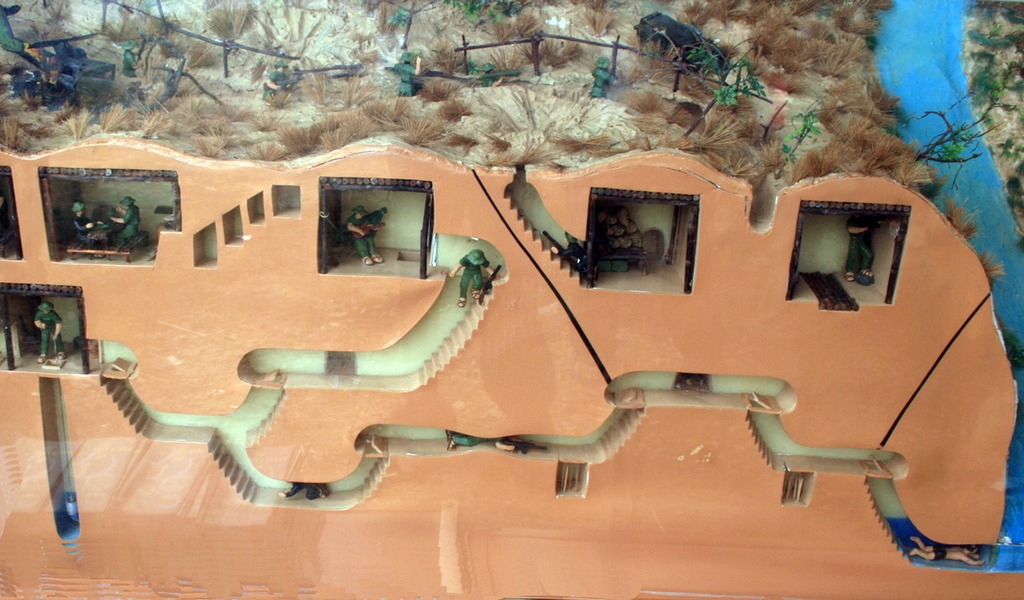Table of Contents
What are the cu chi tunnels in vietnam? Delve into the depths of history and immerse yourself in the fascinating world of the Cu Chi Tunnels in Vietnam, a remarkable network of underground passages that played a pivotal role in the Vietnam War. This intricate system of tunnels, stretching over 200 kilometers, served as a sanctuary for Viet Cong soldiers, providing shelter, storage, and strategic advantages during the conflict. Embark on a journey to discover the secrets hidden beneath the soil, uncovering the stories of resilience, ingenuity, and the unwavering spirit of the Vietnamese people.
History of the Cu Chi Tunnels

The origins of the Cu Chi Tunnels can be traced back to the 1940s, when Vietnamese villagers began constructing a rudimentary network of tunnels as a means of protection against French colonial forces. These tunnels, initially intended for local defense, evolved into a far more extensive and sophisticated system during the Vietnam War, serving as a lifeline for the Viet Cong.
Purpose and Construction of the Tunnels
What are the cu chi tunnels in vietnam were built by the Viet Cong, a communist guerrilla force fighting against the South Vietnamese government and its allies. The tunnels were used as a base of operations, providing shelter, storage, and communication routes for the Viet Cong soldiers. They were also used to launch surprise attacks on the enemy and to transport supplies and weapons.
The construction of the tunnels was a remarkable feat of engineering, considering the limited resources and tools available to the Viet Cong. The tunnels were dug by hand, often under the cover of darkness, using simple tools such as shovels, hoes, and bamboo picks. It is estimated that it took around 20 years to complete the entire network of tunnels.
Geography and Location of the Cu Chi Tunnels

The Cu Chi Tunnels are located in the Cu Chi district of Ho Chi Minh City, formerly known as Saigon. The district is situated in the southeastern part of Vietnam, close to the border with Cambodia. The area is characterized by dense forests and swampy terrain, making it an ideal location for the construction of underground tunnels.
The tunnels were strategically located near key areas such as military bases, roads, and rivers, providing the Viet Cong with easy access to their targets. They were also built in close proximity to the Ho Chi Minh Trail, a supply route used by the North Vietnamese Army to transport troops and supplies from North Vietnam to South Vietnam.
Life in the Tunnels during the Vietnam War

Life in the Cu Chi Tunnels was incredibly challenging for the Viet Cong soldiers who lived and fought there. The tunnels were cramped, dark, and infested with insects and vermin. The lack of ventilation and sanitation made living conditions unbearable, and diseases such as malaria and dysentery were common among the soldiers.
Despite these harsh conditions, the Viet Cong soldiers showed remarkable resilience and adaptability. They developed ingenious ways to survive in the tunnels, such as using bamboo shoots to create air vents and traps to catch animals for food. They also set up makeshift hospitals and schools within the tunnels, demonstrating their determination to continue the fight against their enemies.
Tunnel System and Layout

The Cu Chi Tunnels are a complex network of underground passages that stretch over 200 kilometers. The tunnels were divided into three main levels: the upper level, which was around 3-4 meters deep and used for storage; the middle level, which was around 6-7 meters deep and served as living quarters; and the lower level, which was around 8-10 meters deep and used as a base for launching attacks.
The tunnels were also equipped with various features to aid in their functionality. These included ventilation shafts, trapdoors, and camouflaged entrances. The tunnels were designed in a grid-like pattern, with connecting passages and chambers that allowed for easy movement between different areas.
Strategic Importance of the Cu Chi Tunnels

The Cu Chi Tunnels played a crucial role in the Vietnam War, providing the Viet Cong with a significant advantage over their enemies. The tunnels allowed them to launch surprise attacks on the enemy and then quickly retreat to safety. They also served as a hiding place for weapons and supplies, making it difficult for the enemy to locate and destroy them.
The tunnels also had a demoralizing effect on the American soldiers, who were unaccustomed to this type of guerrilla warfare. The Viet Cong’s ability to disappear into the tunnels and reappear at unexpected locations made it challenging for the Americans to gain control of the area.
Impact of the Tunnels on the Vietnam War

The Cu Chi Tunnels had a significant impact on the outcome of the Vietnam War. They provided the Viet Cong with a safe haven and a base of operations, allowing them to continue fighting against their enemies despite being outnumbered and outgunned. The tunnels also disrupted the supply routes of the American soldiers, making it difficult for them to sustain their military operations.
The tunnels also played a crucial role in the Tet Offensive, a series of coordinated attacks launched by the North Vietnamese Army and the Viet Cong in 1968. The tunnels were used to transport troops and supplies, enabling the Viet Cong to launch a surprise attack on the South Vietnamese and American forces. Although the Tet Offensive was ultimately unsuccessful, it marked a turning point in the war and demonstrated the strategic importance of the Cu Chi Tunnels.
Tourism at the Cu Chi Tunnels Today

Today, the Cu Chi Tunnels have become a popular tourist destination, attracting visitors from all over the world who are eager to learn about the history and culture of Vietnam. The tunnels have been preserved and restored, allowing visitors to experience what life was like for the Viet Cong soldiers during the war.
Tourists can explore a section of the tunnels, which has been widened and lit for safety purposes. They can also see various traps and weapons used by the Viet Cong, as well as a replica of a typical living quarters. Visitors can also watch a short film about the history of the tunnels and the Vietnam War.
Preservation and Restoration of the Tunnels

The preservation and restoration of the Cu Chi Tunnels have been a challenging task due to the humid climate and the constant threat of erosion. However, efforts have been made to maintain the tunnels and ensure that they remain accessible to visitors. The tunnels are regularly inspected and repaired, and new sections are opened up for tourists to explore.
The preservation of the tunnels is crucial in keeping alive the memories of the Vietnam War and honoring the sacrifices made by the Vietnamese people. It also serves as a reminder of the resilience and determination of the Viet Cong soldiers who fought against all odds to defend their country.
Controversies Surrounding the Cu Chi Tunnels
Despite its historical and cultural significance, the Cu Chi Tunnels have also been the subject of controversy. Some critics argue that the tunnels have been commercialized and turned into a tourist attraction, diminishing their authenticity and historical value. Others believe that the tunnels glorify the Viet Cong and downplay the atrocities committed by them during the war.
However, supporters of the tunnels argue that they serve as a memorial to the victims of the war and provide a platform for education and understanding. They also point out that the tunnels are a source of income for the local community and contribute to the economic development of the area.
Conclusion
What are the cu chi tunnels in vietnam are not just a network of underground passages; they are a testament to the resilience, ingenuity, and unwavering spirit of the Vietnamese people. They played a crucial role in the Vietnam War and continue to serve as a reminder of the sacrifices made by the soldiers who fought there.
Today, the Cu Chi Tunnels are a popular tourist destination, offering visitors a unique opportunity to learn about the history and culture of Vietnam. As we explore the tunnels and uncover their secrets, let us remember the stories of courage and determination that lie beneath the soil, and honor the memory of those who lived and fought in these underground passages.